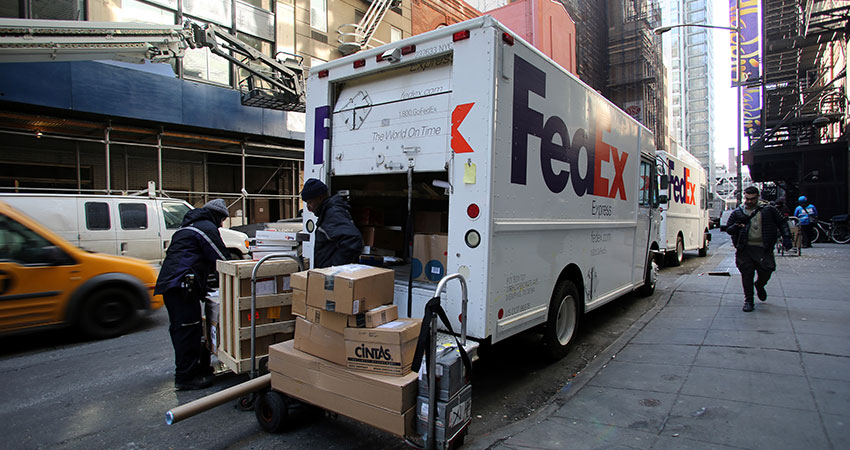Consumers have gotten much more comfortable ordering bigger, bulkier items online and having them shipped to their homes, covering a wide range of items like furniture, home improvement products or even housewares and sporting goods. This is now coming at a significant cost for shippers.
Since Dec. 29, 2019, shippers using UPS have been hit with an additional handling charge at the published rate of $24 for items that weigh more than 50 lbs., down from the previous cutoff of 70 lbs. Thus, the charge is hitting a lot more items than previously, impacting shipping costs and crimping profit margins.
FedEx made the same change to its rate schedule, which was announced in November with its 2020 general rate increase (GRI) and it went into effect on Jan. 20. FedEx made its announcement in September.
“UPS periodically evaluates our pricing to ensure the company is compensated for the value we provide,” said spokesperson Dawn Wotapka. “The weight threshold for applying an additional handling surcharge is being lowered from 70 lbs. to 50 lbs. per package to compensate for the increased volume and higher cost to transport those packages.”
Consultants said some larger shippers are being granted temporary relief from the additional handling change by both carriers, in some cases delaying imposition to August or September.
Consultant Tim Geiken of Platinum Circle Partners said the FedEx weight change has already resulted in a gross hit to shipping expenses of between 3% and 30% for his customers, depending on their shipping profile.
“It’s not uncommon to see a dollar hit that’s well in excess of six figures,” Geiken said. “If you think about it, you can reengineer a package to get smaller and meet DIM requirements, but you can’t reengineer the weight unless you break it up into more packages. It’s an absurd money grab on the part of the carriers.”
Geiken said even if a shipper has 10% of their packages over 50 lbs., “they’re still getting killed on the overall cost. At $24 per unit, that’s a pretty dramatic difference. (Ecommerce shipper) customers with nothing over 50 lbs. are the exception, not the norm. They’re pretty much stuck – they won’t be calling less-than-truckload (LTL) carriers for a 52 lb. package, unless it’s a unique situation. It’s going to their profit line.”
Robyn Meyer, a partner in enterprise solutions at Transportation Insight, said when FedEx first announced the change to the additional handling charge last fall, it caught a lot of shippers by surprise. She added the genesis of the charge was a UPS Teamster contract a decade ago that required a driver and a helper to handle any package weighing 70 lbs. or more.
“A lot of companies since then have based their routing guides on the 70 lb. rule,” Meyer said. “If an item is above that, that would change modes or consider UPS hundredweight or FedEx multi-weight services (that gives discounts for multiple items going to the same location on the same day).”
Meyer said she met recently with a shipping executive at an auto parts company with 3,800 stores, who said they had to scramble to update their shipping system based on the new additional handling charge cutoff.
“Doing some quick math, it added up to a $1 million per year hit for them, based on that one change,” she said. “They went to the carrier and said they didn’t have the budget to handle it, and they helped them mitigate the impact. It depends a lot on how much volume leverage you have.”
Thomas Andersen, a partner and EVP at LJM Group, said his firm has been working with shipper clients since FedEx announced its change in September.
“Since this is a new rule, it’s nearly impossible for anyone to be protected from the fee to apply, unless they have a full waiver on the fee,” Andersen said. “UPS and FedEx are showing some flexibility initially by offering discounts that are typically tiered over time. We have seen exceptions where they are increasing the threshold to higher weights, as well.”
Andersen said carrier reps have communicated the change and offered temporary relief, “but it’s typically third parties that are having to make (shippers) aware. We’re also finding that some account reps are grossly understating the impact, so it’s important to see how many shipments have historically been between 50 lbs. and 70 lbs., to estimate the hit. They should then negotiate accordingly.”
Tim Sailor, principal of Navigo Consulting Group, agreed said shippers can quantify the impact of the additional handling change by pulling down their 2019 shipping from either online reporting or archived invoicing to determine how many shipments fell in the 50 lb.-70 lb. range.
In reviewing December 2019 invoicing for one customer and applying the new additional handling charge, Sailor said, the impact is projected to increase their shipping cost by 8.6% of total net spend.
“The other important exercise is for shippers to immediately review their carrier agreements,” Sailor said. “Most agreements have not addressed concessions for additional handling weight as this has not been an issue in the past. But obviously, it is now.”

